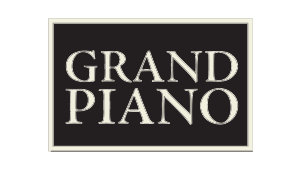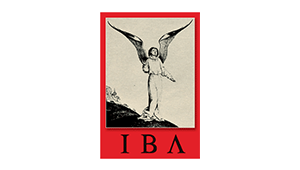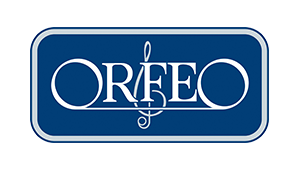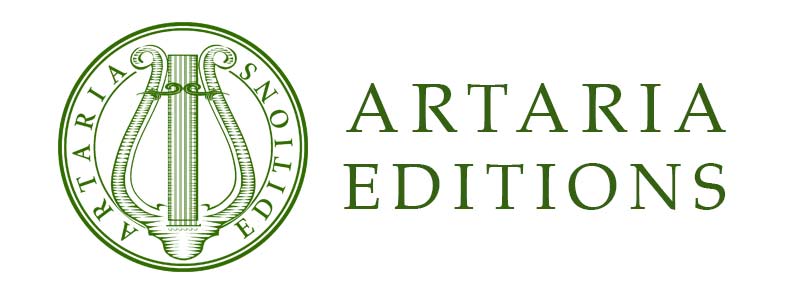Tracklist
Jarvi, Neeme (Conductor)
Jarvi, Neeme (Conductor)
Jarvi, Neeme (Conductor)
Jarvi, Neeme (Conductor)
Jarvi, Neeme (Conductor)
Jarvi, Neeme (Conductor)
Jarvi, Neeme (Conductor)
Jarvi, Neeme (Conductor)
Jarvi, Neeme (Conductor)
Jarvi, Neeme (Conductor)

Neeme Järvi first studied music with his brother Vallo before entering the Tallinn School of Music, where he studied percussion and choral conducting. Having made his public conducting debut in Tallinn in 1954, he continued his studies between 1955 and 1960 at the Leningrad Conservatory, where his teachers in symphonic and operatic conducting included Nicolai Rabinovich and Yevgeny Mravinsky. Both made a great impression upon him, as he recalled: ‘Rabinovich was all beautiful hands and upbeats and everything that conductors need.’ Jarvi has also noted that these mentors were in turn highly influenced by the Jewish conductors who were seeking refuge from Nazi Germany during the 1930s: ‘Bruno Walter and Otto Klemperer conducted in Leningrad every year, and these young Rabinovichs and Mravinskys looked (at them) every day, as I looked at Mravinsky and Rabinovich thirty years later.’
Following graduation from the Leningrad Conservatory in 1960, Järvi played as a percussionist in the Estonian Radio Symphony Orchestra, being subsequently appointed chief conductor of this orchestra in 1963, as well as chief conductor and artistic director of the State Opera and Ballet Theatre of the Estonian Soviet Socialist Republic (renamed the Estonian National Opera Theatre after independence was restored to Estonia). In the same year he co-founded the Estonian Chamber Orchestra in Tallinn and became its artistic director. During the 1960s Järvi began to gain an international reputation through his regular appearances with the Leningrad Philharmonic Orchestra and the major Moscow orchestras, as well as with guest appearances elsewhere in the former Soviet Union and Eastern Europe. Having made his operatic conducting debut with Bizet’s Carmen at the Kirov Theatre in Leningrad, he later conducted the Soviet Union’s first-ever performances of Der Rosenkavalier, Porgy and Bess and Il Turco in Italia.
In 1971 Järvi took first prize at the Accademia Nazionale di Santa Cecilia Conducting Competition in Rome. This opened the door to invitations to conduct in Western Europe (Great Britain, Sweden, Holland, Germany) and further afield (Argentina, Canada and Japan), and in 1973 and 1977 he made his first appearances in the USA, on tour with the Leningrad Philharmonic and the Leningrad Symphony Orchestras. His debut at the Metropolitan Opera, New York came in 1979, when he conducted Eugene Onegin to considerable critical acclaim. Järvi had relinquished his position at the head of the Estonian State Opera in 1976, when he was appointed the chief conductor of the newly-formed Estonian State Symphony Orchestra, but following a performance he gave in Estonia of Arvo Pärt’s Credo, which contained words from the Bible, members of the Estonian State Symphony Orchestra were sacked from their posts by the authorities. As a result, in 1980 Järvi decided to emigrate with his family to America.
Two major agencies, International Concert Management and Columbia Artists, offered to represent him and he decided to work with the latter. Soon he was conducting the major American orchestras, including the Cincinnati Symphony, New York Philharmonic and Philadelphia Orchestras, developing in particular a close association with the orchestras of Chicago, Los Angeles, San Francisco and Detroit. In addition appointments with European orchestras quickly followed. Järvi worked alongside Simon Rattle as principal guest conductor of the City of Birmingham Symphony Orchestra between 1981 and 1984, and following an appearance at the Royal Opera House in Sweden conducting Richard Strauss’s Salome he became chief conductor of the Gothenburg Symphony Orchestra in 1982, holding this appointment until 2004 when he became the orchestra’s conductor emeritus. Similarly, he was chief conductor of the Scottish National Orchestra between 1984 and 1988, then becoming that orchestra’s conductor emeritus in 1990. Having become an American citizen in 1987, Järvi was appointed chief conductor of the Detroit Symphony Orchestra in 1990: as with the Gothenburg Orchestra, he developed a long relationship with this ensemble, stepping down only in 2005, when he became conductor emeritus of this orchestra too, as well as the chief conductor of the New Jersey Symphony Orchestra and of The Hague Residentie Orchestra. Throughout the period of his Detroit appointment, Järvi also accepted numerous guest engagements, appearing in Europe and the USA regularly as both a symphonic and operatic conductor, as well as being the principal guest conductor of the Japan Philharmonic Orchestra.
Järvi has a superlative conducting technique through which he strives for close communication with orchestral players: ‘…you have to talk with your hands with the musicians. You have to explain with every gesture, like you’re breathing. If you’re not breathing you’re not alive. This kind of a relationship – always showing what you want – works so beautifully, and American orchestras are the best to work with as a conductor, because they are so professional. Just show them and it’s done. If you are not showing, nothing comes. You are just beating, no music.’ In addition he is a conductor who is frequently highly spontaneous in performance, giving his interpretations notable freshness and immediacy. This aspect of conducting is often in the forefront of his teaching. At the annual conducting course in which he participates at Pärnu, a resort town on Estonia’s southern coast, Järvi has been known to both censure and encourage students with comments such as: ‘Boring music-making! Do something with it! If you are in the middle of a piece and want to do something, do it.’ Those who have played with Järvi praise highly his collaborative style of music-making. A member of the Detroit Symphony Orchestra, violinist Beatriz Budinszky, has commented in interview, ‘Neeme is proof that a conductor can be a gentleman... he has that charisma, that contagious enthusiasm.’
Järvi is also unusual in that he is constantly searching out and performing neglected works by both popular and lesser-known composers. This philosophy developed early in his career: when he was active in Estonia he presented many new works by fellow countrymen Eduard Tubin and Arvo Pärt, long before they had achieved the international distinction which they now enjoy. These three characteristics – a highly communicative conducting technique, consistent spontaneity and the constant search for new repertoire – have made Järvi an ideal recording conductor. During the course of his career he has recorded well over three hundred and fifty discs for the Deutsche Grammophon, Chandos, BIS, Orfeo, EMI and BMG labels, as well as for the Detroit Symphony Orchestra’s own label. He has recorded complete symphonic cycles of Swedish composers Wilhelm Stenhammar and Hugo Alfvén; Danish composers Niels Gade and Carl Nielsen; Finnish composer Jean Sibelius (his complete orchestral music); Johannes Brahms and Franz Schmidt; Czech composers Bohuslav Martinů and Antonín Dvořák; Estonian composers Arvo Pärt and Eduard Tubin; Russian composers Glazunov, Prokofiev and Shostakovich; and many others. With the Detroit Symphony Orchestra, he has recorded thirty-six discs for the Chandos label, including an important American series with works by Samuel Barber, Amy Beach, Charles Ives, George Chadwick, Duke Ellington and William Grant Still. In addition, notably with the Gothenburg Orchestra, Järvi has revived several important works by Russian composers which have vanished undeservedly from the concert repertoire, such as Maximilian Steinberg’s Symphony No. 1 and Myaskovsky’s Symphony No. 6.
The considerable influence exerted by recordings is acknowledged by Järvi, who has commented, ‘I think that the orchestras that I lead should become known in the world. It’s not possible to travel around the world with them that much, and thus I can introduce them via the records. Gothenburg is a small Swedish town and the Gothenburg orchestra would have remained unknown had we not recorded for Deutsche Grammophon. The Gothenburg Symphony Orchestra’s almost one hundred records have given it considerable recognition.’ Neeme and Liilia Järvi’s three children are all musicians: his two sons Paavo and Kristjan are both distinguished conductors, while his daughter Maarika is a flautist of note.
© Naxos Rights International Ltd. — David Patmore (A–Z of Conductors, Naxos 8.558087–90).

Jean Sibelius grew to maturity at a time of fervent Finnish nationalism, as the country broke away from its earlier Swedish and later Russian overlords. Brought up in a Swedish-speaking family, Sibelius acquired a knowledge of Finnish language and traditional literature at school; early Finnish sagas proved a strong influence on his subsequent work as a composer. After early training in Helsinki and later in Berlin, he made his career in Finland, where he was awarded a state pension. Although he lived until 1957, he wrote little after 1926, feeling out of sympathy with current trends in music.
Stage Works
Sibelius wrote incidental music for Maeterlinck’s Pelléas et Mélisande, Procopé’s Belshazzar’s Feast and Shakespeare’s The Tempest. His well-known Karelia Suite was derived from incidental music for a pageant. His popular Valse triste was originally written for Järnefelt’s play Death to accompany a deathbed scene.
Orchestral Music
Symphonies
Sibelius wrote seven symphonies, an additional eighth apparently completed but destroyed. The first two of these enjoy particular popularity.
Symphonic Poems etc.
Symphonic poems by Sibelius, their inspiration usually from ancient Finnish legend, include En saga, the Lemminkäinen Suite, of which ‘The Swan of Tuonela’ and ‘Lemminkäinen’s Return’ form a part, Pohjola’s Daughter and Tapiola. Finlandia was adapted from music provided for Press Pension celebrations in 1899.
Concertos
Sibelius was trained as a violinist. His Concerto for the instrument was, however, a technically more demanding work than he could have tackled himself. Sibelius made a revised version, which now has a place in standard solo violin repertoire and still makes considerable demands on the performer.
Chamber Music
Chamber music by Sibelius includes the String Quartet ‘Voces intimae’, a Sonatina for violin, and a number of short pieces for violin and piano.
Piano Music
Although the musical achievement of Sibelius may be regarded as largely orchestral, he did also write a number of shorter piano pieces for which there was always a market.
Songs
Although he wrote some hundred songs over a period of more than 30 years, mainly settings of Swedish texts (eight in German and only a handful in Finnish), they have suffered comparative neglect by the side of his larger-scale orchestral and choral music. Sibelius regarded many of them as representative of his inner self.






























